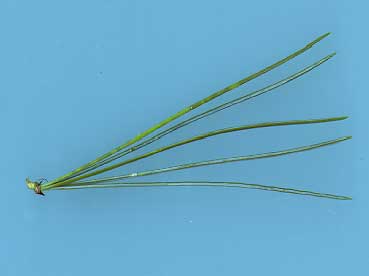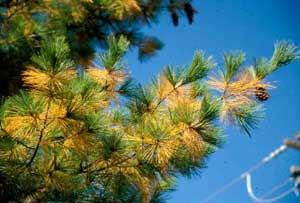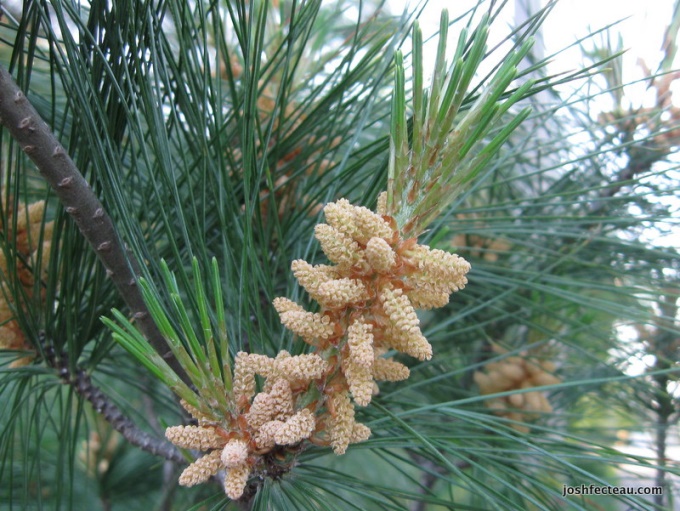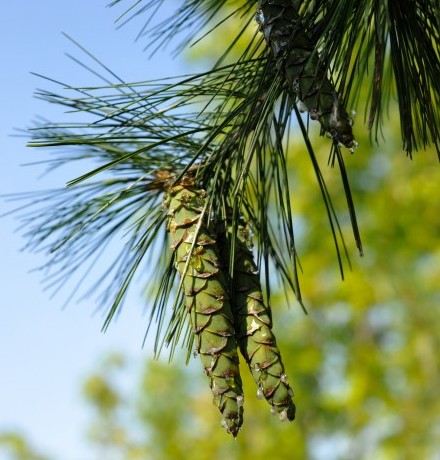Name That Tree
By Gil Medeiros, Fairfax Master Gardener
 If you chose a. Eastern white pine (Pinus strobus), you were correct! This is another tree that is fairly easy to identify when you are driving through a neighborhood; you likely have several on your street. It is shaped like a Christmas tree when small but becomes more flat-topped when mature. The long needles tell you it is a pine, not a fir, spruce, or cypress. If you get up close to an eastern white pine, the key to identification is that the needles come in bundles of 5. The other native pines have needle bundles of 2 or 3.
If you chose a. Eastern white pine (Pinus strobus), you were correct! This is another tree that is fairly easy to identify when you are driving through a neighborhood; you likely have several on your street. It is shaped like a Christmas tree when small but becomes more flat-topped when mature. The long needles tell you it is a pine, not a fir, spruce, or cypress. If you get up close to an eastern white pine, the key to identification is that the needles come in bundles of 5. The other native pines have needle bundles of 2 or 3.
Needles may persist on the tree for two to three years. Some turn yellow and drop in the fall — to the consternation of homeowners who think the tree is dying. Extension agents and master gardeners are practiced at dealing with this panic.
Eastern white pines may produce both male and female cones on the same tree. This occurs in the spring. The male cones release pollen into the air. The pollinated female cones produce seed.

Needles in bundle of 5

Appearance of needles prior to normal leaf drop
Eastern white pine is commonly planted in landscapes. It is favored for its fast growth rate, ease of planting, and low cost. One caution: this cute little Christmas tree grows into a very big specimen unless you specifically obtain a dwarf cultivar. Make sure you have enough room for any tree that you plant.

Eastern White pine male cones

Unripe female cones
References
• Eastern White Pine, University of
Kentucky Department of Horticulture
• Pinus strobus, North Carolina State Extension